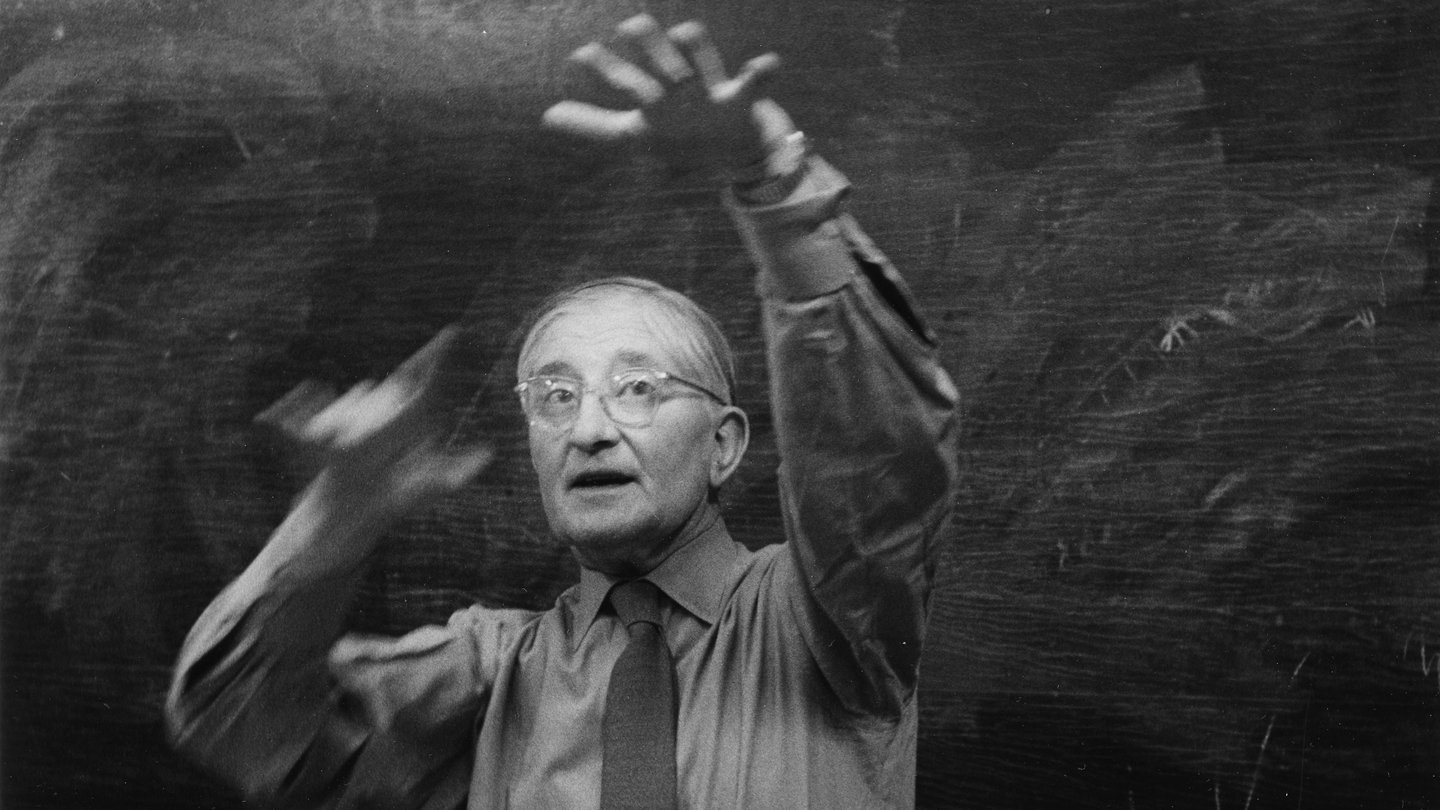Leaf study with reversed grounds, ca. 1945–55, Black Mountain College or Yale University. Kodachrome slide
Anni and Josef Albers were passionate teachers, believing that the goal of education is to encourage exploration and experimentation.
Anni Albers
Anni Albers believed that in art as in life you can go anywhere from anywhere.
Anni Albers entered the Weaving Workshop at the Bauhaus in 1923 having completed the legendary Bauhaus Preliminary Course. She remained a key member of the workshop until the Bauhaus was forced to close in 1932. In January 1929, at the time an assistant to Gunta Stölzl, head of the workshop, Albers was appointed to teach Design Theory to the Bauhaus weavers. In September that year she became acting director. At Black Mountain College from 1933 to 1949 she was head of the weaving department and after she and Josef moved to New Haven in 1950, she accepted a select group of individual students whom she taught privately at her home. During the 1950s she gave a course of guest lectures to architecture students at Yale University and at schools across the US.
Albers described how, at the Bauhaus, beginning in 1922, teaching and learning took the form of experimentation. With very little direct instruction or guidance, she wrote, “. . . Technique was picked up as it was found to be needed and insofar as it might serve as a basis for future experimentations.” This learning process which unfolded at the Bauhaus through necessity—the school inherited a fully equipped weaving studio, but there was no qualified instructor—remained the core of Albers's teaching method. She believed that “. . . a free way of approaching a material seems worth keeping in mind as far as the work of beginners is concerned. Courage is an important factor in any creative effort. It can be most active when knowledge in too early a stage does not narrow the vision.”
Anni Albers and a student, Black Mountain College, ca. 1944
Josef Albers
Josef Albers believed that teaching art is not a matter of imparting rules, styles, or techniques, but of leading students to a greater awareness of what they are seeing.
Albers said his goal as a teacher was “to open eyes.” For Albers, the fundamental building block of an art education was development of the capacity to see more acutely. You can’t be an artist, Albers reasoned, unless and until you’d mindfully explored the visual field through its key elements: line, shape, color, and texture.
Albers taught courses in design and drawing at the Bauhaus. At Black Mountain College, he gave courses in those same subjects as well as in color and painting. When he assumed the chairmanship of the Department of Design at Yale, Albers scrapped the existing curriculum and replaced it with instruction in the fundamentals of design, drawing, and color. His workshops at the Harvard School of Design, his instruction as visiting professor at the Hochschule für Gestaltung in Ulm, Germany, and his many workshops and courses in schools and universities across the United States and in Latin America were devoted entirely to these same subjects.
Albers’s approach relied on direct observation and self-discovery. His classes were peppered with analyses of such commonplace phenomena as New York City streetlights, monuments in the park, and insect anatomy. Absorbed in visual phenomena, he would point out what others had perhaps viewed cursorily but not contemplated: the shape of the Yale football stadium, the spot of light that remains for a moment when a TV set is switched off, the way a red roof could merge with a blue sky, how the color of tea deepened in a glass. Albers was, as his paintings and graphics reveal, profoundly sensitive to the formal relationships of things, intensely conscious that everything in the visual field exists in a context, and that every line and color affects adjacent line and colors.
What do we actually see? How well do we see it? How can we translate our discoveries into meaningful work? Albers felt that these concerns, rather than theories about form, should be the focus of art training.






